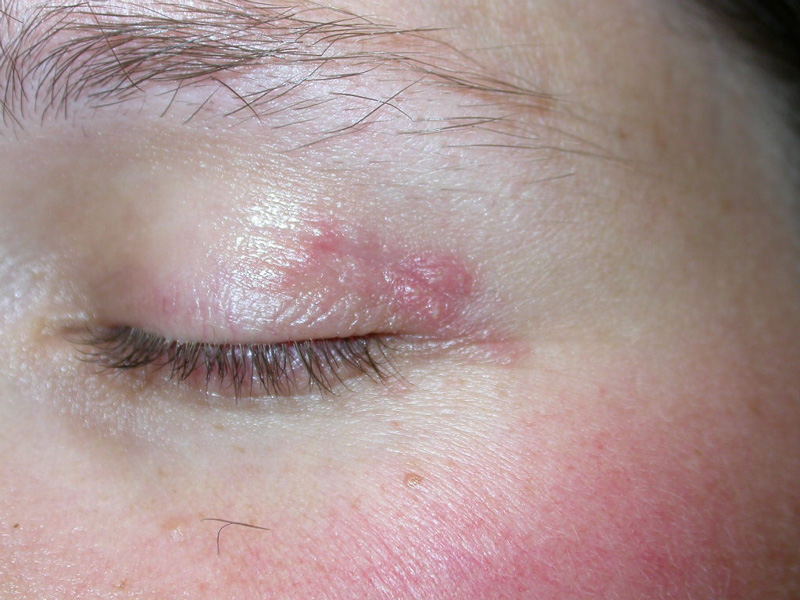Perioral dermatitis is a facial rash that tends to occur around the mouth, eyes, and nose. Managing this condition often involves a combination of proper skincare, lifestyle adjustments, and, in some cases, the use of specific creams. In this article, we’ll explore perioral dermatitis, its causes, and considerations for choosing and using creams to alleviate symptoms and promote healing.
Understanding Perioral Dermatitis:
1. Characteristics:
- Perioral dermatitis is characterized by red, bumpy, and sometimes itchy or burning skin. It may resemble acne or rosacea but has distinct features.
2. Possible Causes:
- Causes of perioral dermatitis can include the use of topical steroids, hormonal factors, fluoride-containing dental products, and sometimes a genetic predisposition.
3. Triggers:
- Triggers for perioral dermatitis may include stress, hormonal changes, excessive use of skincare products, and certain medications.
Choosing Perioral Dermatitis Creams:
1. Topical Antibiotics:
- Dermatologists often prescribe topical antibiotics, such as clindamycin or metronidazole, to reduce inflammation and combat bacterial overgrowth associated with perioral dermatitis.
2. Avoiding Steroids:
- It’s crucial to avoid the use of topical steroids, as they can exacerbate perioral dermatitis. Discontinuing steroid use is a key aspect of managing this condition.
3. Gentle Moisturizers:
- Non-comedogenic and fragrance-free moisturizers can be beneficial for keeping the skin hydrated without clogging pores or causing irritation.
4. Oral Antibiotics:
- In some cases, dermatologists may prescribe oral antibiotics, such as tetracycline or doxycycline, for more severe or persistent cases of perioral dermatitis.
5. Azelaic Acid Cream:
- Azelaic acid is a topical treatment that has shown effectiveness in managing rosacea and acne-like conditions, making it a potential option for perioral dermatitis.
Tips for Using Perioral Dermatitis Creams:
1. Follow Dermatologist’s Guidance:
- Always follow the instructions and recommendations of your dermatologist when using prescribed creams or medications.
2. Be Consistent:
- Consistency is key in skincare routines. Apply prescribed creams as directed, and avoid sudden changes in products.
3. Patch Test:
- If introducing new products, including over-the-counter creams, perform a patch test to ensure they don’t trigger or worsen perioral dermatitis.
4. Mild Cleansers:
- Use a gentle, fragrance-free cleanser that won’t exacerbate skin sensitivity. Avoid abrasive scrubs.
5. Sun Protection:
- Protect your skin from the sun with a broad-spectrum sunscreen. Choose a non-comedogenic option to prevent further irritation.
Lifestyle Considerations:
1. Limit Skincare Products:
- Simplify your skincare routine and limit the use of potentially irritating products, including heavy creams and makeup.
2. Avoid Triggers:
- Identify and avoid triggers that may exacerbate perioral dermatitis, such as spicy foods, hot beverages, or stress.
3. Evaluate Dental Products:
- Consider fluoride-free dental products, as fluoride-containing toothpaste has been associated with perioral dermatitis.
4. Stay Hydrated:
- Maintain adequate hydration to support overall skin health.
5. Seek Professional Guidance:
- If you suspect perioral dermatitis or experience persistent symptoms, consult a dermatologist for accurate diagnosis and tailored treatment recommendations.
Conclusion:
Managing perioral dermatitis involves a holistic approach, including the use of appropriate creams, lifestyle adjustments, and professional guidance. By understanding the causes, choosing suitable creams, and adopting a gentle skincare routine, individuals can navigate perioral dermatitis with the goal of reducing symptoms and promoting skin healing. Always consult with a healthcare professional for personalized advice tailored to your specific condition and needs.
